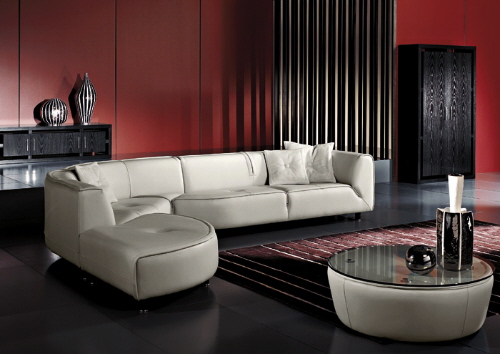How to take care of your leather furniture
Source:architecturaldigest.com
Handsome leather seating is a luxurious investment and therefore one you want to last a lifetime. Of course wear and tear is inevitable, but ideally your leather pieces will only get better with age.

Handsome leather seating is a luxurious investment and therefore one you want to last a lifetime. Of course wear and tear is inevitable, but ideally your leather pieces will only get better with age. “The best way to think of leather is that it is like your skin. Good-quality aniline leather is a natural, breathable material; it changes over time,” says furniture designer and RH artisan Timothy Oulton. And just like skin, leather requires regular care to look its best. Not sure where to start? We asked Oulton and Christophe Pourny, a New York–based restoration expert and the author of The Furniture Bible, to share their advice for how to keep new leather sofas and chairs in good shape and bring timeworn ones back to life.
Assess the leather quality
Aniline-dyed leather furniture, where the dye penetrates the entire material, is not only durable but is actually meant to look lived-in, says Oulton. “Rather than covering and sealing the surface with a colored coating, we work dyes and waxes into the leather by hand. As a result, we feel like the furniture wears in, and not out. It’s very easy to live with, and it develops a rich patina over time.”
Consider your room layout
“In most cases, it is ambient conditions that will lead to the cracking of leather—extreme temperatures and lack of moisture,” says Oulton. “Placing a sofa right under your air-conditioning or next to a radiator or in front of a roaring fire is going to dry out the leather.” Sunlight can also have this effect, says Pourney, so avoid putting furniture right next to a window or glass door, or hang light-blocking curtains.
Paws off
Cats, and sometimes dogs, will use leather as a (very expensive) scratching post, so teach them to stay off the sofa. “I think this is the biggest cause of damage we hear of from customers calling the studio,” says Pourny.
Moisturize the leather
“A regular dusting sounds obvious, but keep the surface clean,” says Pourny. All you need is a soft, dry cloth and some elbow grease. To treat specific distressed areas, find a treatment made for your type of leather. Pourny sells an Old World–inspired leather serum and cream, which can be applied with a cloth to soften the leather and smooth scratches, while Oulton recommends Leather Masters. Regardless, use a light hand. “Less is more when applying any product to leather. Test a small area first,” says Pourny. “For colored leather be extra careful and know in advance that any product will most likely darken the leather.”
For big jobs, turn to a pro
Don’t run the risk of damaging the leather further. “For large cuts, we recommend contacting a professional who can mix color and texture by applying heat and make repairs to the leather,” says Pourny.
(Source: architecturaldigest.com Author: Lindsey Mather)

 沪公网安备31010402003309号
沪公网安备31010402003309号



